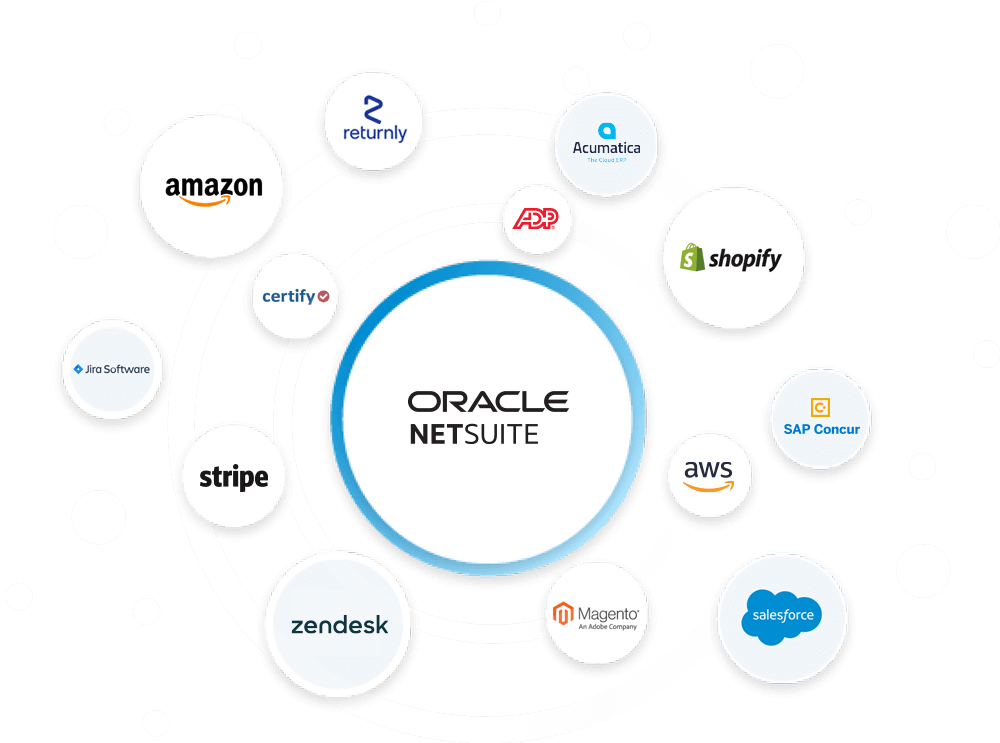Over the past decades, e-commerce has evolved from a simple online shopping experience into a complex web of interconnected channels. Brands are no longer limited to a single website; they interact with customers across social media, marketplaces, and their own storefronts to capture attention and drive sales. Still, while multi-channel selling opens new avenues for revenue, it also introduces significant challenges in managing data, operations, and customer experiences.
And to overcome these challenges, more and more stores are looking to unify their multi-channel e-commerce into one system – which is often a big challenge in its own right.
That’s why, in this article, we’ll delve into the benefits of multi channel eCommerce integration and examine how a certain piece of middleware called Celigo can assist in the complex integrations that may transform your business for the better.
The Need for Multi-Channel E-commerce Integration
Selling your products through multiple online platforms at the same time, nowadays, is simply a necessity. A customer finds your product on Instagram, checks reviews on Google, compares prices on Amazon, and finally buys it from your website – this is multi-channel e-commerce at its finest. And it may sound straightforward, but managing it behind the scenes is anything but simple for the following reasons:
- Data Silos: Each platform generates its own data, leading to fragmented information – having different inventory counts on your website and Amazon store is a recipe for chaos.
- Operational Inefficiency: Handling each platform separately means duplicate work, higher chances of errors, and a lot of wasted time.
- Inventory Management: Without real-time updates, you risk overselling (leading to angry customers) or underselling (leading to excess stock).
- Inconsistent Customer Experience: Discrepancies in product information and pricing across channels can confuse and frustrate customers, hurting your brand’s reputation.
To mitigate those downsides, many stores sooner or later decide to perform a transformative procedure – multi channel eCommerce integration. It involves unifying all platforms the store uses into one holistic system, typically with the help of middleware acting as a connector. And how exactly does it solve all the problems? Let’s answer this question in our following sections.
Benefits of Digital Transformation in E-commerce
Enhanced Operational Efficiency
Improved Customer Experience
With AI and machine learning, you can analyze customer data to offer personalized recommendations and targeted marketing. For example, if a customer frequently buys skincare products, the system can suggest complementary items like moisturizers or face masks, increasing the likelihood of a sale.
Additionally, chatbots and AI-powered customer support tools can provide instant assistance to customers, promptly answering queries and resolving issues.
Increased Revenue Growth
Advanced analytics help you understand customer preferences and behavior, enabling more effective marketing campaigns. This way, using data to identify which products are most popular with different customer segments allows you to create targeted promotions that resonate with those groups.
At the same time, retargeting ads, personalized email reminders and simplifying the checkout process can reduce cart abandonment rates. Digital transformation tools help identify where customers drop off and provide solutions to bring them back to complete their purchase.
Better Inventory Management
Machine learning algorithms can predict future demand based on historical sales data, seasonality, and market trends. Accurate demand forecasting ensures you have the right amount of stock at the right time, reducing holding costs and preventing lost sales.
Digital tools can also automate the replenishment process by setting reorder points for each product. When inventory drops below a certain level, the system triggers an automatic reorder, ensuring that you never run out of popular items.
Celigo’s Role in E-commerce Process Automation
And now, let’s shift our focus specifically on how your store can benefit from integrating all of your software into one system. We’ve already mentioned that eCommerce process automation is typically assisted by specialized middleware – and in this article we are going to analyze the case of Celigo.
Celigo has been our connector of choice for many years now, and being certified Celigo partners, our team knows all the ins and outs of this particular product.
How Celigo Automates E-commerce Processes
Order Management
Managing orders from multiple sales channels can be a logistical nightmare. Celigo automates order management by:
- Centralizing Orders: Orders from various platforms like Shopify, Magento, Amazon, and eBay are funneled into a single system, reducing errors and saving time.
- Automated Order Routing: Orders are automatically routed to the appropriate warehouse or fulfillment center based on predefined rules.
- Real-Time Order Tracking: Celigo provides real-time updates on order status, from the moment an order is placed until it is delivered.
Inventory Synchronization
Likewise, keeping inventory synchronized across multiple channels is crucial to avoid stockouts and overselling. Celigo handles this expertly as well:
- Real-Time Inventory Updates: As sales occur on any channel, inventory levels are updated in real-time across all platforms.
- Automated Reordering: Celigo can trigger automatic reorder processes when inventory levels fall below a certain threshold.
- Inventory Allocation: During peak times or sales events, Celigo can allocate inventory based on predefined rules, ensuring high-demand products are distributed optimally across channels
Payment Processing
A well-oiled payment processing algorithm is also essential for a smooth customer experience and efficient financial operations – and Celigo can help with that:
- Integrated Payment Gateways: Celigo connects with various payment gateways, ensuring that transactions from all sales channels are processed efficiently and securely.
- Automated Reconciliation: Payments are automatically reconciled with orders and accounting systems.
- Fraud Detection and Prevention: Celigo can integrate with fraud detection tools, automatically flagging suspicious transactions and reducing the risk of chargebacks and losses.
Shipping and Fulfillment
Celigo automates shipping and fulfillment processes to ensure timely and accurate deliveries:
- Automated Shipping Label Generation: Celigo integrates with shipping carriers to automatically generate shipping labels based on order details.
- Carrier Selection: Celigo can automatically select the most cost-effective and fastest shipping carrier based on predefined criteria.
- Real-Time Shipping Updates: Customers receive real-time updates on their shipping status, including tracking information.
Key Features of Celigo’s Automation Solutions
In our opinion, Celigo’s main strengths lie in the following standout features:
- Pre-Built Connectors: Celigo offers pre-built connectors for popular e-commerce platforms, ERPs, CRMs, and other business systems. These connectors allow for quick and seamless integrations, reducing the time and complexity of setup.
- Customizable Workflows: You can customize certain workflows to match your specific processes.
- User-Friendly Interface: Celigo’s intuitive interface allows users to set up and manage integrations without needing extensive technical expertise.
- Comprehensive Dashboard: A centralized dashboard provides an overview of all integrated processes, offering real-time visibility into order status, inventory levels, payment processing, and shipping updates.
- Error Handling and Alerts: Celigo’s robust error handling features automatically identify and address issues in real-time. Alerts and notifications ensure that potential problems are promptly addressed, minimizing disruptions to your operations.
- Security and Compliance: Celigo ensures that all data transfers are secure and comply with industry standards and regulations.
Developing a Unified Commerce Strategy
Steps to Develop a Successful Unified Commerce Strategy
Assessing Current E-commerce Infrastructure
Before you can proceed with the integration, you need to understand your starting point- your current e-commerce infrastructure:
- Inventory of Systems: List all the platforms, tools, and systems your business currently uses. This includes your e-commerce platforms (like Shopify or Magento), ERP systems (like NetSuite), CRM tools (like Salesforce), payment gateways, and shipping carriers.
- Evaluate Integration Points: Identify how these systems currently interact, if at all. Are there manual processes that could be automated? Are there data silos that hinder certain operations?
- Performance Metrics: Assess the performance of each system. Look at metrics like system uptime, processing speed, and error rates. This evaluation will help you understand where improvements are needed.
- User Feedback: Gather feedback from team members who use these systems daily. Their insights can highlight pain points and inefficiencies that might not be evident from metrics alone.
Identifying Integration Needs
Once you have a clear picture of your infrastructure, the next step is to identify what needs to be integrated and how:
- Core Processes: Determine which business processes need to be integrated for a unified operation. This typically includes order management, inventory tracking, customer data synchronization, and financial reporting.
- Data Flow: Map out how data should flow between systems. For example, how should customer data from your e-commerce platform sync with your CRM, and how should order data move from your online store to your ERP.
- Pain Points: Identify the biggest pain points in your current operations that could be solved through integration. This might include reducing manual data entry, eliminating data silos, or improving real-time inventory visibility.
Choosing the Right Tools and Platforms
Not to be ignored is the crucial connector selection stage – only the appropriate tools and platforms will yield the best results:
- Our Recommendation: Consider Celigo, which has been the go-to connector for our team for many years now. Otherwise, look for tools that offer pre-built connectors for your existing platforms, customizable workflows, and robust support.
- Scalability: Choose platforms that can scale together with your business. As your operations grow, the tools should handle increased data volumes, additional sales channels, and more complex workflows.
- Compatibility: Ensure that the tools and platforms you choose are compatible with your existing systems.
- Vendor Support: Evaluate the level of support and training offered by the vendors. Good support can significantly ease the implementation process and help resolve issues quickly.
Implementing Process Automation
Now is the time for implementation proper – with the help of the chosen connector we perform the following actions:
- Automate Order Management: Set up workflows that automatically route orders to the appropriate warehouse or fulfillment center, generate shipping labels, and update order statuses in real-time.
- Synchronize Inventory: Implement real-time inventory sync across all sales channels.
- Streamline Payment Processing: Automate payment processing and reconciliation. Integrate your payment gateways with your ERP and accounting systems to ensure accurate financial records and reduce the risk of errors.
- Customer Data Management: Automate the synchronization of customer data between your e-commerce platform, CRM, and marketing tools.
Continuous Monitoring
Lastly, a unified commerce strategy requires ongoing monitoring and optimization:
- Performance Metrics: Continuously track such KPIs as order processing times, inventory accuracy, and customer satisfaction.
- Error Tracking: Implement systems for tracking and resolving errors in real-time. Automated alerts and notifications can help your team address issues before they escalate.
- Feedback Loops: Establish feedback loops with your team and customers. Regularly gather insights on how the systems are performing and where there are opportunities for further optimization.
- Periodic Reviews: Conduct periodic reviews of your unified commerce strategy. Assess whether the current tools and processes are meeting your business needs and adjust as necessary.
Best Practices for Effective Implementation
Business Process Mapping
Document every step of your business processes across all departments – order processing, inventory management, customer service, and accounting. The goal is to have a comprehensive map that highlights how each process interlinks and where integration can bring the most benefit.
Look for inefficiencies and bottlenecks in your current workflows. For deeper insights, conduct workshops with representatives from different departments – they can show interdependencies that might not be apparent when looking at processes in isolation.
Advanced Data Management Techniques
Advanced Features of Integration Tools
Use Celigo’s ability to create custom automation rules – this could include setting up conditional workflows that adapt based on certain triggers or conditions. Beyond that, make sure to utilize API integrations to connect bespoke or less common systems.
Also try to integrate AI that can enhance your automation. Predictive analytics can help in demand forecasting and inventory management, ensuring you stock the right products at the right time.
User Experience and Change Management
Enhancing Customer Experiences with Unified Commerce
How Unified Commerce Solutions Improve Customer Satisfaction
Personalized Shopping Experiences
Unified commerce solutions let you gather and integrate customer data from all channels, allowing for more personalized shopping experiences:
- Targeted Marketing: By analyzing customer data, you can deliver personalized marketing messages and offers based on individual preferences and purchase history.
- Customized Recommendations: You can provide personalized product recommendations both online and in-store. For example, an online recommendation engine can suggest products based on previous purchases, while in-store associates can use customer profiles to offer tailored advice.
Faster and More Reliable Order Fulfillment
You can also optimize your order fulfillment processes, leading to faster and more reliable delivery:
- Real-Time Inventory Management: With integrated inventory systems, you can provide accurate stock information to customers.
- Optimized Order Routing: Orders are automatically routed to the most appropriate fulfillment center or store based on factors such as location, inventory levels, and delivery times.
- Transparent Order Tracking: Customers receive real-time updates on their order status, from processing to delivery.
Easy Returns and Exchanges
On top of that, you can set up a seamless returns process, which is another critical component of customer satisfaction:
- Unified Returns Policy: Customers can return or exchange products purchased online at any of your physical stores, or vice versa.
- Streamlined Processing: Integrated systems ensure that returns and exchanges are processed quickly and efficiently. Inventory is updated in real-time, and customers receive refunds or replacements promptly.
- Improved Customer Support: Customer service representatives have access to comprehensive purchase and interaction histories, enabling them to handle returns and exchanges more effectively.
Conclusion
Integrating various e-commerce platforms through middleware like Celigo is bound to make your store more efficient and your customers more satisfied. From real-time inventory management to seamless payment handling and advanced shipping logistics, Celigo can easily address the core challenges often faced by multi-channel retailers.
For those willing to start working on the integration, assessing current infrastructure, identifying integration needs, choosing the right tools, and implementing process automation will be the four key steps. Meanwhile, continuous monitoring and periodic reviews will also ensure the system remains efficient and adaptable.
However, an effective use of Celigo for systems like NetSuite and BigCommerce requires thorough preparation, and a well-structured process – something that not all teams can handle on their own. That’s why, should you experience any problems before, during or after the integration process, don’t hesitate to reach out to a team of professionals like Hairball – we will get the job done.



